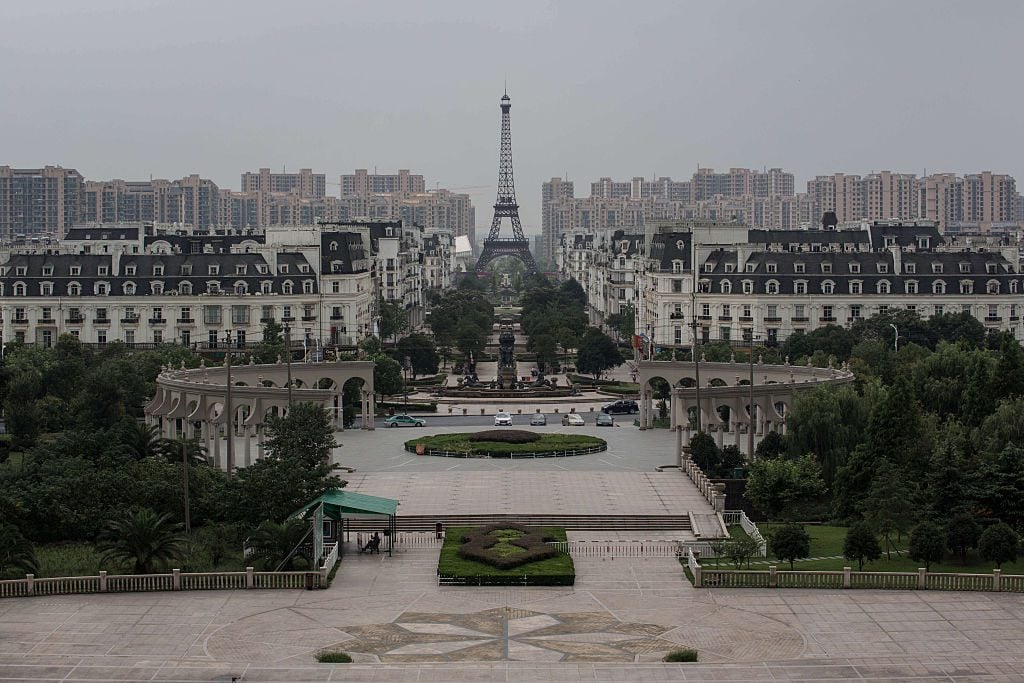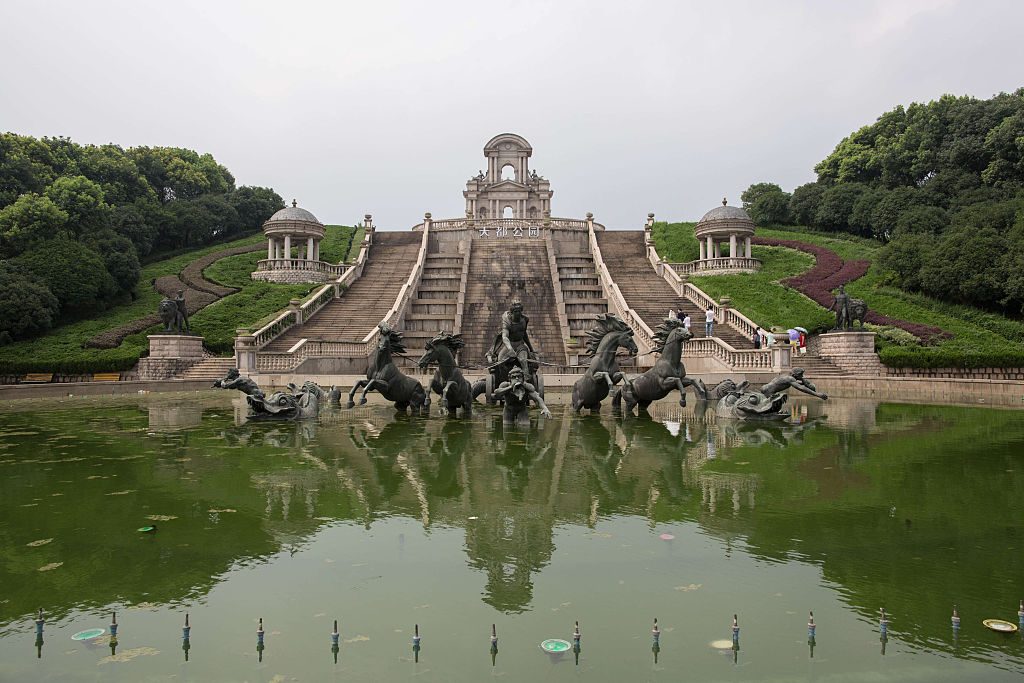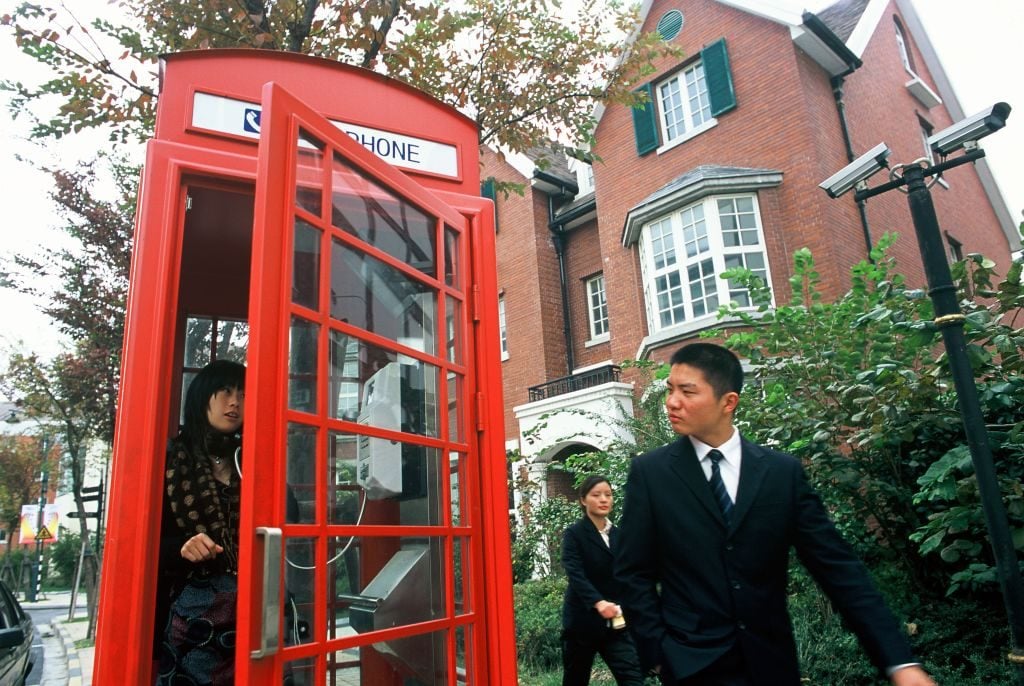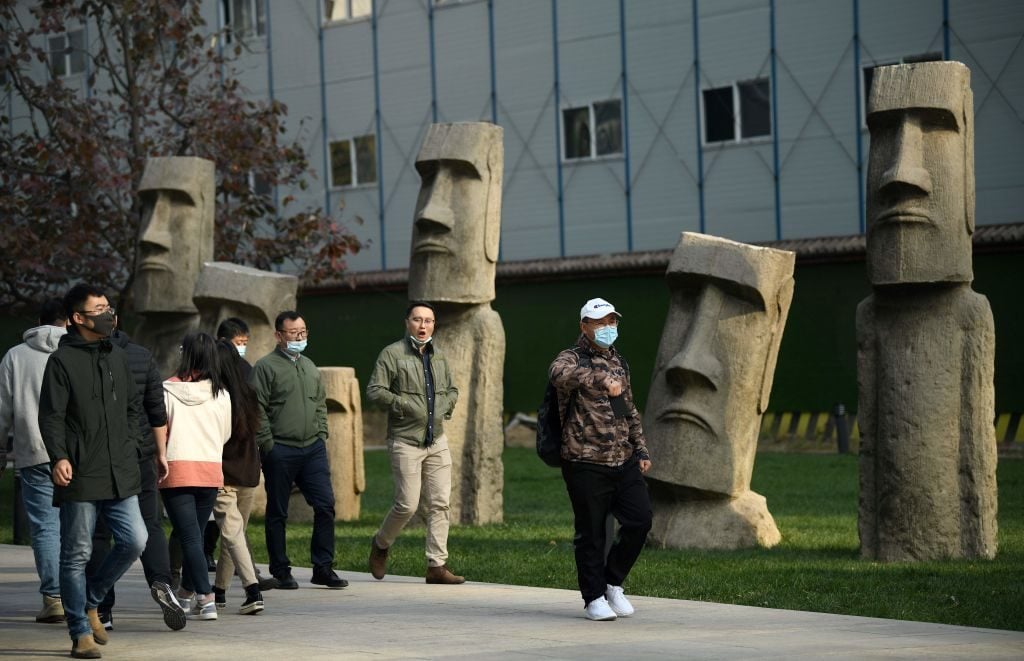Art World
Why Urban Planners in China Have Become Master Copyists of the West’s Most Famous Monuments
Read an excerpt from the new book "Fake Heritage" by John Darlington.

Read an excerpt from the new book "Fake Heritage" by John Darlington.

John Darlington

In his new book Fake Heritage: Why We Rebuild Monuments, British author John Darlington roves the world examining replica architecture, fake artifacts, and false monuments, looking at the ethics of copying—and the complex reasons that motivate it.
The undisputed leader of copyist heritage in modern times is China. Not only does the country boast several replicas of the Eiffel Tower, it also possesses architectural samples from Moscow, Sydney, Washington, DC, and from nearly every other major global city. Some are purely about entertainment: no one would confuse John Wolfe Barry and Horace Jones’s 1894 Tower Bridge with the double-vision 2012 example that spans one of Suzhou’s canals, or mistake a staring array of moai heads lining the paths of Beijing’s business area for those of Easter Island. But there is also something more interesting going on than replication as tourist attraction or elaborate decoration.
Shanghai, in common with the rest of urban China, has been expanding rapidly over the last decades, and with that trend set to continue, the city authorities developed a new strategy designed to spread growth among a series of new satellite towns. Launched in 2001, the One City, Nine Towns plan sought to create a dispersed model that would help to decongest the country’s largest city. Each new town would have a different identity, part experiment to test alternative models for city living in a country where the new-town norm is one of monotonous, medium-rise uniformity, and part marketing device to attract Shanghai’s growing middle classes to live there.
Consequently, ten distinctive new town centres were planned, inspired by Chinese, European and North American models. A Class 2 ‘city’ Songjiang (England), and eight Class 3 towns, Anting (Germany), Buzhen (North America/Europe), Fengcheng (Spain), Fengjing (North America), Gaoqiao (Netherlands), Pujiang (Italy), Luodian (Scandinavia) and Zhoujiajiao (a traditional Chinese water town) were constructed, while Zhoupu, a ninth town, was never implemented (Den Hartog 2010).

A replica of Paris in Tianducheng, a residential community build by Zhejiang Guangsha Co. Ltd. Photo: Guillaume Payen/LightRocket via Getty Images.
Thames Town (Songjiang, south-west of Shanghai) takes its inspiration from the historic centres of Bath and Oxford, Ebenezer Howard’s garden city movement of the early twentieth century and the development of Milton Keynes in the 1960s, the last two being innovative examples of large-scale urban planning that sought to improve people’s lives. Built between 2003 and 2007, the town contains many of the historic characteristics of a typical English market town: a church, three squares (Love Square, Holiday Square and Municipal Square), cobbled streets, Georgian- and Victorian-style buildings, half-timbered cottages, a fish and chip shop and a pub.
English street names prevail—Kensington Garden, Oxford Street, Chelsea Street—as do many of the cliches of British life: red telephone boxes, traffic lights on black-and-white poles and caretakers in red uniforms that resemble the British army’s Grenadier Guards, less the bearskin caps.
Similar schemes that have borrowed wholesale from European and North American countries are evident across China. The picturesque Austrian village of Hallstatt is replicated in Guangdong Province. Everything— from the main square to the eighteenth-century Lutheran church and flower-bedecked balconies—was copied in 2012 from the original. Even the semi-natural lakeside setting has been carefully shaped and modified to resemble Hallstatt’s distinctive shoreline. And, as with Thames Town, visitors are greeted by hackneyed fixtures and fittings of another nation’s identity, including security guards in Chinese interpretations of traditional Austrian military uniform. It is easy to be critical of such initiatives, especially in the face of the Chinese Hallstatt’s piped soundtrack from the 1965 film The Sound of Music and Thames Town’s statues, but the original aspiration was, and remains, to improve urban living. The copycat towns are an attempt to learn from other places, recognising that the standard Chinese model for new towns has led to endless grid towns, each orientated north-south, characterised by tower-block regularity, dreary functionality, congestion, pollution and a lack of soul.

Residents stroll around the streets of Thames town, a British-themed town near Shanghai. Photo: Olivier CHOUCHANA/Gamma-Rapho via Getty Images.
The strong motivation in these new settlements is to create places on a human scale and with different characteristics where people want to live. So they tend to be as much about urban density, access to green and social spaces, and planned variation, as they are about the mimicked physical fabric of a replica building. The heritage they truly seek to emulate is the patina of a slow-grown place and the challenge they face is how to condense centuries of urban growth into a planned new town.
Sometimes there is a logical connection between copied and copy: Shanghai took inspiration for the One City, Nine Towns initiative from the garden city movement in the United Kingdom, and consequently one of the towns was British. Anting, the German town, was also the home of Volkswagen in China, a natural location to develop a German style of architecture. Hangzhou is famous as a traditional water town, and an obvious place to replicate Venice.
Early reports from these places suggest deserted towns, except for a scattering of Chinese tourists taking wedding photographs, as people struggled with issues of affordability and transport. But more recently there is a recognition that communities have taken root, citing, in the case of Thames Town, quality of life as a determining factor in choosing to live there. Elsewhere, there has been less success, such as at Holland Village in Shenyang, a flower-growing business, residential and tourist complex built on a Dutch theme in 1999, which was abandoned barely before it was started after the arrest of its founder for fraud in 2002.

A replica of Easter Island’s moʻai statues in Beijing. Photo: Noel Celis / AFP via Getty Images.
And there has been adaptation, with the Chinese modifying their European facsimiles to suit local tastes. Bianca Bosker, author of Original Copies (2003), revisited Sky City, a replica of Paris on the outskirts of Hangzhou, which possesses its own Eiffel Tower, Champs-Élysées and Haussmann-era buildings complete with cafes spilling out on to pavements. Originally completed in 2007 to house 10,000 people, the city had grown by 2017 to contain between 14,000 and 40,000, depending upon which developer Bosker was interviewing.
While the Parisian cafes and patisseries might have looked authentic, they catered entirely for Chinese tastes. Across many of these copycat towns, European open balconies have been enclosed in glass, with washbasins added to conform to Chinese custom. Elsewhere, bamboo hedges have been planted alongside vegetable gardens and loquat trees. In Hangzhou’s Venice Water Town, St Mark’s Square has been appropriated as a basketball court and, perhaps appropriately for a Communist state, the Doge’s Palace accommodates local workers.
Yes, there is a novelty value in such schemes, but they are not theme parks. These are places where people live and work. Borrowed and duplicated heritage is used both as an aspirant symbol for those marketing them and as a motif for a better quality of life.
Excerpted from Fake Heritage: Why Rebuild Monuments by John Darlington. Copyright © 2020 by John Darlington. Reprinted by permission of Yale University Press, London.